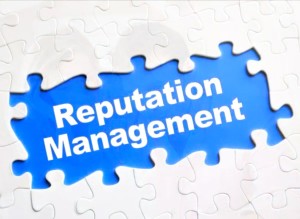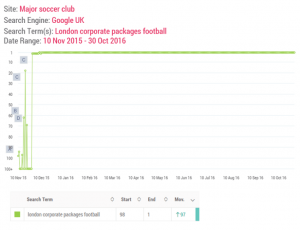As a small business owner, you likely have more responsibilities and things to manage due to having a small team. Oftentimes, marketing falls on the back burner, which only hurts your brand.
Understandably, small businesses sometimes do not have the funds to indulge in hiring a marketing team or dedicated marketing staff. If you find yourself in this position, don’t worry; there is plenty you can do to jumpstart your brand’s online image.
How To Develop Your Small Business Marketing Strategy
First and foremost, you need to define your audience. Who will be interested in your product or service? What age and gender are they? What is their typical lifestyle? How will they find your brand? These are all important questions that you should ask yourself.
If you’re not putting your brand out there and showcasing what makes you stand out in your industry, how will potential new customers find you?
Without marketing, you’re relying strictly on selling. Do you have a brick and mortar location? Is your store or office in a desirable location? Will new customers be able to stumble in? If you answered no to any of these questions, then marketing will play a larger role in your businesses success than you may think.
As a business, your goal is to provide a solution to someone’s problem. Be it a service or product, the ultimate goal is to better someone’s life. But how can you do that if the public doesn’t know you exist?
Use the following steps to help you design a simple marketing strategy for your small business.
1. Define Your Brand
Defining your brand isn’t just stating the company name. You first need to identify why you are in business, and what your main goal is. Create a brand story that will tell customers how your business came about, and its mission.
Tone, typography and colors are crucially important to defining your brand. Create a list of a few adjectives that describe your brand to be used in your marketing materials. By using similar adjectives, you’re creating consistency in your brand. Choose a font to be used across the board in your marketing materials to also hone in on consistency.
Do you have a logo? If so, use the colors as often as possible in your branding efforts. If you don’t have a logo yet, don’t worry, there are numerous contractors who can help you create the logo of your dreams.
2. Create Brand Awareness
Once you’ve defined your brand, the next step is to put yourself out there! Every person who is aware of your brand is a potential new customer, so be sure and put your best foot forward.
There are endless creative methods to drum up brand awareness, which often leads to a few rounds of trial and error. Find what works for your brand! A good place to start is with stellar content.
You can create social media accounts for your business, which is one of the leading ways to connect with your desired audience. Facebook offers an in-depth way to target your audience with advertising. You can actually choose the types of people that you want to view your ads based on their interests.
If your brand is based in a small community, use that to your advantage! People love to get involved and support new local businesses. Hang a flyer at your local grocery store and be sure to include “Follow us on Facebook” so that your brand will stay on their mind.
Does your business give back to your community? Then showcase it! Local people love to see businesses giving back and they will make the effort to support you, just like you do for their community!
3. Find Your Target Audience
Without customers, it’s impossible to have a successful business, which is why marketing experts take finding your target audience so seriously.
Don’t worry about limiting your audience by narrowing your focus. Lori Fairbanks at Business News Daily says, “It’s important to remember that choosing a target audience doesn’t decrease your marketing, it only focuses your attention.”
If you don’t have any customers yet, look at your competitors. Who are they marketing to? What kinds of customers are they targeting? Who follows them on social media?
4. Create A Website
Jennifer Host with Business News Daily says, “Even if you don’t plan to sell products online, it’s crucial to have a website. When a potential customer finds a new business (new to them, or new in general), they are going to cross-reference that business, looking for its social media and website. A business website is a great and easy way to convey legitimacy to your audience.” This is especially important in today’s world, as most everyone has Google in the palm of their hand.”
WordPress is an excellent and easy to use tool for building a website. WordPress offers themes, and premade layouts to help make the design process easier.
Of course, if you don’t have the time or desire to create your own website, you can hire a team of professionals to get the job done for you!
5. Decide On A Marketing Budget
You can do all of your marketing in house, although that’s not always the best option. As a small business owner, we know you’re busy, and marketing is usually the first thing to slip through the cracks.
Hiring a marketing team sounds expensive and intimidating, but there are numerous small marketing businesses out there that want to help you! At Three Girls, one of the first things we discuss is your budget. We want you to be comfortable with your investment, which is why we work so hard to create a suitable marketing plan with a budget specific to your needs.
6. Set Up Online Tools
Online media tools can help build your brand, and demonstrate what your company is capable of. Try creating a Yelp page, or encourage your customers or clients to write a company review on Facebook. Facebook reviews are similar to Yelp, as they both provide insight to potential new customers and create a direct channel of communication.
A Google My Business page is extremely important as it provides information like hours of operation, location and a featured image. Be sure and fill out the information precisely, so that all of your customers can clearly understand the information you share. Google My Business also allows customers and clients to leave reviews. These reviews will pop up before Yelp or Facebook, as your Google My Business page shows up every time someone Googles you.
7. Choose Marketing Channels
Marketing channels are the various outlets that will help you reach your intended target audience. You can’t go wrong with having a business Facebook page; it’s the other major platforms you may need to consider. Don’t spread yourself too thin, so pick two or three platforms that best suit your brand and that attract your target audience.
If you’re trying to reach business professionals, LinkedIn might be the answer for you. If you have photography skills to accompany your beautiful products or charming team, Instagram might be the choice for your small business.

You can also advertise to your customers through email marketing. Try out a monthly newsletter using a service like Mailchimp and be sure to include a coupon so that your customers are enticed to always open the newsletter!
Jennifer Post says that “Email is a vital part of digital marketing, as it allows you to communicate with those who have purposely signed up to receive communications from you, whether that’s a newsletter, discounts or general information. However, it’s easy for people to get scammed through email, so design your emails in a way that lets people know it’s actually your business sending them.”
Examples of marketing channels:
- Email:
Be sure to make your newsletter or other form of email marketing worth your customers while. Think about how full their inboxes are, and take their time into consideration. Only put valuable need-to-know information in your newsletter; your customers and clients will thank you.
- Social Media: Facebook, LinkedIn, Twitter, Instagram, YouTube:
There are numerous social media platforms available for use, and more being created every day! This is why it’s important to know which platforms will actually benefit your business. So before you start creating accounts, do some research on what type of people use each social media site and only sign up for ones where your target audience is found.
- Online Networking:
Jennifer Post states that, “As you develop your brand and become recognizable, other companies and personalities will want to work with you on campaigns and marketing efforts. For small businesses, guest blogging, partnered YouTube videos, and similar collaborations are a popular way to mutually boost outreach and help each other grow.”
- Pay-per-click:
“PPC is a method of marketing that allows you to place targeted ads on pages that your customer base is likely to visit. A click on that ad will redirect the customer to your website, and all you have to pay is a small fee per click. If you are trying to branch out into a new target audience or just gain a larger customer base, this could be a great channel to explore. It’s essentially the opposite of organic traffic, but with the amount of use search engines get, it has the potential to increase your business substantially,” says Jennifer Post.
- Website:
Oftentimes a website is the first thing a business owner creates for marketing and the first thing customers will see of the brand. But all too commonly, websites aren’t optimized to bring in traffic and reach new customers. Pay attention to your search engine optimization (SEO), and include keywords and product descriptions to help your website rank higher in search results.
8. Start Blogging
Once you’ve set up your website and marketing channels, it’s time to start blogging! Not only does producing consistent content for your website give you shareable social media content, it registers with Google’s algorithms.
Blogging is a great way to provide your customers with value, and create engagement that fosters a real relationship between you and your audience. As you grow your online presence, you will see that consistent blogging can be the backbone of your search engine optimization (SEO).

One of the most challenging parts of blogging is the need for consistency. In order for Google to register that you are putting out a specific type of content, you need to do it on a regular basis. Try bi-weekly, or twice a month to get started. Always aim to post on the same day of the week, at the same time. For example, post your article on the first and third Friday of the month at 10am. After a few months of blogging consistently, Google will pick up on it, and start looking for your content to show in search results.
9. Master SEO
Search engine optimization is one of the best marketing methods available. Ben Mizes says, “The idea is that when you create valuable engagement with your audience, your website will rise to the top of relevant Google searches. There is no outreach in the world that beats topping the Google search page. SEO is equal parts art and science. It will require investment of time and money, but when you get powerful organic results with SEO, they last. Moreover, the customers who come to you because of your SEO effort will be valuable customers who already hold strong trust for you.”
Now that you know how to get started, it’s time to take a leap of faith into the vast world of marketing!
Business & Finance Articles on Business 2 Community
(34)
Report Post







